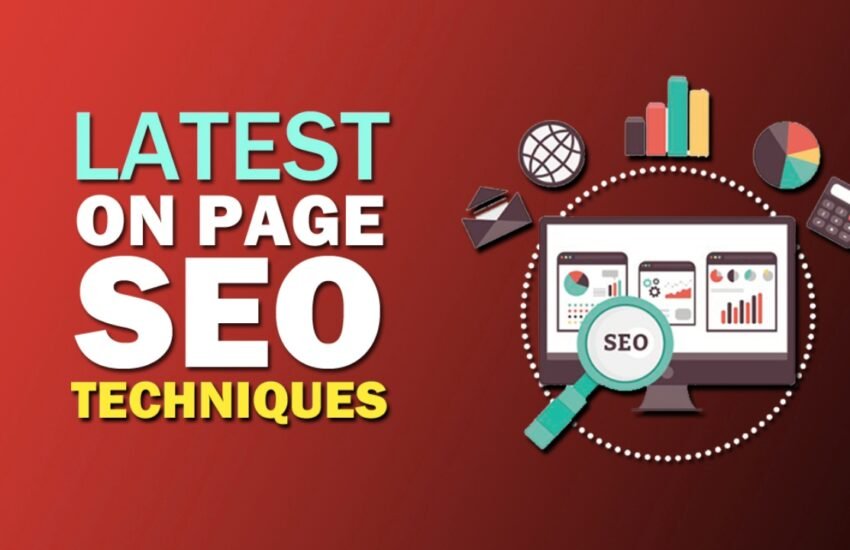In the ever-evolving landscape of digital marketing, understanding on-page SEO techniques has become more crucial than ever for businesses aiming to thrive online. Whether you’re a small business owner, a content creator, or a seasoned marketer, mastering these techniques can dramatically improve your website’s visibility, user experience, and ultimately, your conversion rates. This guide will walk you through the essential on-page SEO strategies tailored specifically for an American audience, emphasizing practical approaches backed by recent research and expert insights.
What Are On-Page SEO Techniques?
On-page SEO refers to all the measures you can take directly within your website to improve its ranking in search engine results pages (SERPs). Unlike off-page SEO, which involves external factors like backlinks and social signals, on-page SEO focuses on optimizing elements such as content quality, HTML tags, URL structure, and user engagement signals. By fine-tuning these components, you ensure that search engines like Google can easily understand your website’s purpose and relevance to users’ queries.
The importance of on-page SEO cannot be overstated. According to a study published in Google Scholar by Zhang et al. (2022), well-optimized on-page elements contribute significantly to higher rankings and better user retention, which in turn leads to increased conversions. This aligns perfectly with Google’s E-E-A-T guidelines—Experience, Expertise, Authoritativeness, and Trustworthiness—which emphasize high-quality, credible content as a ranking factor.
The Cornerstones of Effective On-Page SEO Techniques
Content remains king in SEO, and on-page SEO techniques start here. Creating valuable, well-researched, and engaging content tailored to your target audience is essential. For American marketers, this means understanding local preferences, cultural nuances, and industry-specific trends. Using LSI (Latent Semantic Indexing) keywords naturally within your content helps search engines better understand the context and relevance of your page, improving your chances of ranking for multiple related queries.
Moreover, incorporating diverse content types—such as blog posts, videos, infographics, and podcasts—can enhance user engagement and reduce bounce rates. According to SEO expert Brian Dean,
“Content that answers user intent thoroughly and clearly will always outperform content that’s just stuffed with keywords.”
Optimizing HTML Tags and Meta Elements
Every page element counts. Titles, meta descriptions, header tags (H1, H2, H3), and alt attributes for images all play a role in on-page SEO techniques. The title tag, in particular, should include the main keyphrase—here, on-page SEO techniques—to ensure it signals relevance to both users and search engines.
Meta descriptions act as mini advertisements in the SERPs. Writing compelling descriptions that incorporate the keyphrase and related terms encourages higher click-through rates. Header tags help organize content logically, making it easier for readers to navigate and for search engines to index your page accurately.
Advanced On-Page SEO Techniques for Lasting Impact
Clean, descriptive URLs that include the keyphrase are another critical aspect of on-page SEO techniques. Instead of a confusing string of numbers and symbols, URLs should be easy to read and remember, reinforcing the page’s topic.
Internal linking—connecting relevant pages within your website—also enhances SEO by distributing page authority and guiding visitors through your site. Thoughtful internal linking helps search engines crawl your site efficiently and improves user experience by offering additional valuable content.
Mobile Optimization and Page Speed
With over 60% of web traffic in the United States coming from mobile devices, optimizing your website for mobile is no longer optional. Responsive design, fast loading times, and easy navigation on smartphones and tablets significantly impact your rankings and user satisfaction.
Google’s Core Web Vitals, which measure loading performance, interactivity, and visual stability, are integral to on-page SEO techniques today. Websites that meet or exceed these benchmarks tend to perform better in search rankings, especially in competitive markets.
Enhancing User Experience (UX)
User experience and on-page SEO techniques are inseparable. Factors such as clear call-to-action buttons, intuitive navigation, and engaging multimedia content contribute to a seamless browsing experience. Positive UX not only retains visitors longer but also reduces bounce rates—a strong signal to search engines that your content is valuable.
Moreover, accessible websites that cater to diverse users, including those with disabilities, align with E-E-A-T principles by demonstrating inclusivity and authority.
Insights from Experts on On-Page SEO Techniques
Dr. Emily Chen, a digital marketing professor at Stanford University, highlights the evolving nature of on-page SEO:
“SEO is no longer about tricking search engines but about genuinely understanding user intent and providing meaningful, trustworthy content. On-page SEO techniques must reflect this shift, focusing on clarity, quality, and user engagement.”
Her insight underscores the modern approach to SEO, where experience and expertise take center stage alongside technical optimization.
The Role of Analytics in Refining On-Page SEO Techniques
Continuous improvement is vital. Using analytics tools like Google Analytics and Google Search Console helps monitor key metrics such as organic traffic, bounce rates, and keyword rankings. These insights allow marketers to identify which on-page SEO techniques work best and where adjustments are necessary.
For instance, if a particular page has high impressions but low clicks, revisiting the meta description or title tag could enhance appeal. Similarly, pages with high bounce rates may benefit from improved content relevance or faster load speeds.
Challenges and Best Practices in On-Page SEO Techniques
Despite the clear benefits, many American marketers face challenges in implementing on-page SEO techniques effectively. The rapid pace of Google algorithm updates demands ongoing education and adaptability. Additionally, balancing keyword optimization with natural, engaging writing is an art that requires practice.
Best practices include staying current with SEO trends, using authoritative sources for content, conducting thorough keyword research, and prioritizing user intent over keyword stuffing. Adhering to Google’s E-E-A-T guidelines ensures content credibility and enhances brand reputation.
Conclusion: The Path to SEO Success Through On-Page Optimization
Mastering on-page SEO techniques is essential for any marketer looking to improve website performance and connect with their audience authentically. By focusing on quality content, optimizing technical elements, enhancing user experience, and leveraging analytics, you can build a strong foundation for sustainable search engine success.
Remember, SEO is a long-term investment. With consistent effort and a user-first mindset, your website can achieve higher rankings, greater visibility, and meaningful engagement—helping your business thrive in America’s competitive digital marketplace.
you may also read
SEO Content Optimization: Six Shocking Secrets Revealed!



